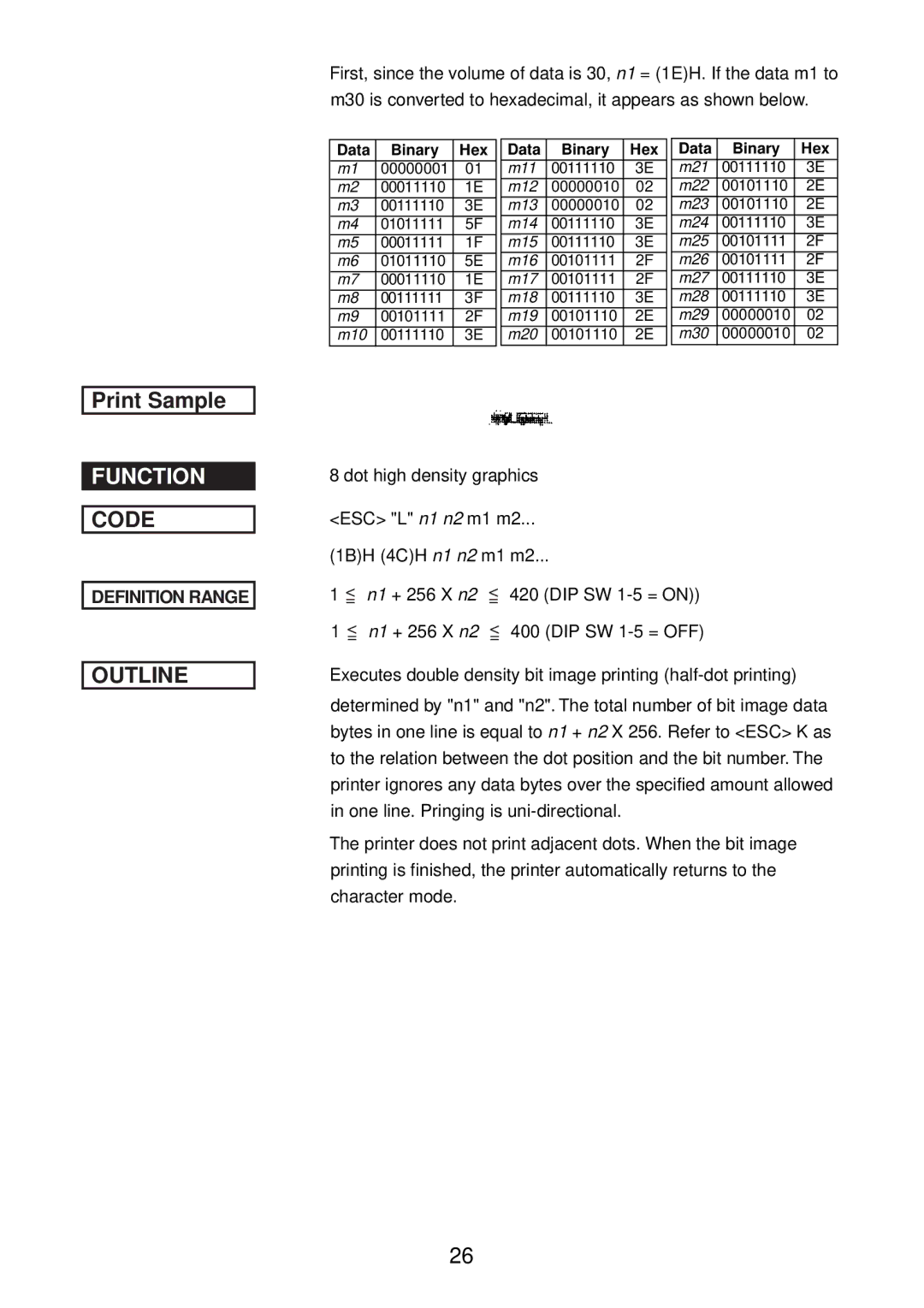
Print Sample
FUNCTION
CODE
DEFINITION RANGE
OUTLINE
First, since the volume of data is 30, n1 = (1E)H. If the data m1 to
m30 is converted to hexadecimal, it appears as shown below.
Data | Binary | Hex |
| Data | Binary | Hex |
| Data | Binary | Hex |
m1 | 00000001 | 01 |
| m11 | 00111110 | 3E |
| m21 | 00111110 | 3E |
m2 | 00011110 | 1E |
| m12 | 00000010 | 02 |
| m22 | 00101110 | 2E |
m3 | 00111110 | 3E |
| m13 | 00000010 | 02 |
| m23 | 00101110 | 2E |
m4 | 01011111 | 5F |
| m14 | 00111110 | 3E |
| m24 | 00111110 | 3E |
m5 | 00011111 | 1F |
| m15 | 00111110 | 3E |
| m25 | 00101111 | 2F |
m6 | 01011110 | 5E |
| m16 | 00101111 | 2F |
| m26 | 00101111 | 2F |
m7 | 00011110 | 1E |
| m17 | 00101111 | 2F |
| m27 | 00111110 | 3E |
m8 | 00111111 | 3F |
| m18 | 00111110 | 3E |
| m28 | 00111110 | 3E |
m9 | 00101111 | 2F |
| m19 | 00101110 | 2E |
| m29 | 00000010 | 02 |
m10 | 00111110 | 3E |
| m20 | 00101110 | 2E |
| m30 | 00000010 | 02 |
8 dot high density graphics
<ESC> "L" n1 n2 m1 m2...
(1B)H (4C)H n1 n2 m1 m2...
1 <= n1 + 256 X n2 <= 420 (DIP SW
1 <= n1 + 256 X n2 <= 400 (DIP SW
Executes double density bit image printing
determined by "n1" and "n2". The total number of bit image data bytes in one line is equal to n1 + n2 X 256. Refer to <ESC> K as to the relation between the dot position and the bit number. The printer ignores any data bytes over the specified amount allowed in one line. Pringing is
The printer does not print adjacent dots. When the bit image printing is finished, the printer automatically returns to the character mode.
26
